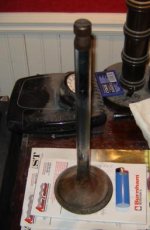lawn_king said:
You have to wonder if it would be more cost effective for them to power those ships with nukes?
Here is why you won't see any more US non-Military Nuclear Ships anytime soon...Remember the owner of the ship is the owner of the waste...

This is what the shutdown of the N.S. Savannah has gone thru thus far...
To close a nuclear power plant permanently, federal law requires that the facility must be "decommissioned." This is accomplished by safely removing it from service and reducing residual radioactivity to a level that permits release of the property and termination of the operating license.
The Nuclear Regulatory Commission has strict rules governing nuclear power plant decommissioning and these rules involve the cleanup of radioactively contaminated plant systems and structures, and the removal of the radioactive fuel. The NRC's rules and requirements protect workers and the public during the entire decommissioning process and continue to protect the public after the license is terminated.
The U.S. Maritime Administration, which manages the NS Savannah for the federal government, has been complying with all the NRC rules and is utilizing those rules to guide this decommissioning project.
The requirements for decommissioning a nuclear power plant are set out in NRC regulations (Title 10 of the Code of Federal Regulations, part 20 subpart E, and parts 50.75, 50.82, 51.53, and 51.95).
The Nuclear Regulatory Commission has published a detailed Fact Sheet on decommissioning. To view the NRC's Fact Sheet, click here to download the PDF file (You must have Acrobat Reader installed to view this document.)
Decommissioning the NS Savannah.
Although the NS Savannah has been defueled for many years and is considered radiologically stable, there is much decommissioning work left to be done.
The Partial decommissioning work accomplished in the mid-1970s was principally designed to render the reactor permanently inoperable, and actually left much of the nuclear plant intact. The major components that were removed at the time included the primary system coolant pumps and the primary demineralizer tanks. The rest of the plant components, equipment and piping systems remained intact and in place. Electrical components were tagged out to prevent their operation, and the control rod drive system was completely disabled (mechanically, hydraulically and electrically), and disconnected from the control rods themselves. And of course, all the fuel was removed, along with nearly all of the primary system water, and the highly radioactive demineralizer resins, which were part of the primary water purification system.
Natural decay over the past 30-35 years has reduced the inventory (quantity) of residual radioactive material to a small fraction of the original. What is left is radiologically stable, which means that the inventory will not substantially reduce over the next 50 years because most of the short-lived radioisotopes have already decayed.
In the NS Savannah's reactor decommissioning process, all the remaining equipment on board, and the components and piping associated with the nuclear power plant will be removed and disposed of in Nuclear Regulatory Commission-licensed facilities.
In its simplest sense, decommissioning of the NS Savannah's nuclear plant will be much like constructing the plant, only in reverse. During Construction, precision and attention to detail was required to ensure the nuclear plant was constructed to the exacting tolerances necessary to ensure safe operation. During decommissioning, a similar high standard will ensure public health and safety is maintained as irradiated and/or contaminated components are removed and contaminated surfaces cleaned to NRC decommissioning standards. Worker safety will be ensured by training, planning, scheduling, mock-up rehearsals and coordinating all work activities.
Oversight of the decommissioning project will be performed by both MARAD and the NRC. Final surveys will be performed by MARAD and verified by NRC prior to terminating the nuclear license and completing the decommissioning process.
Public involvement is encouraged throughout the process via a variety of methods, including a planned Citizen Advisory Board. Public meetings will be held throughout the process....(Gee do you think any of these meeting caused more work???....

)
NS SAVANNAH Reactor Decommissioning Project
